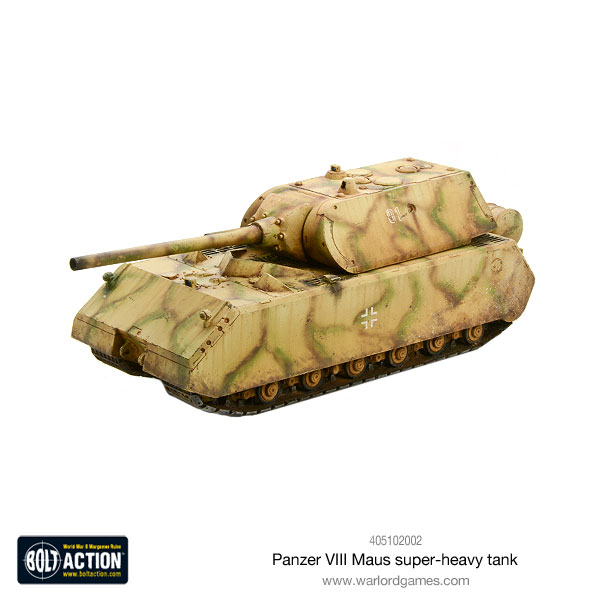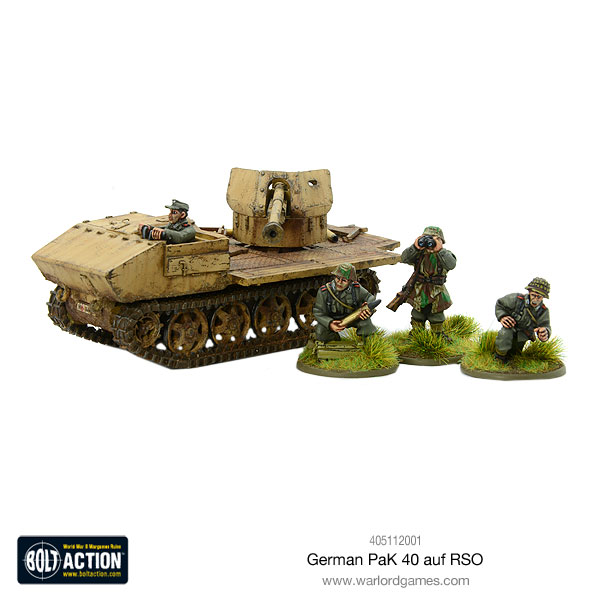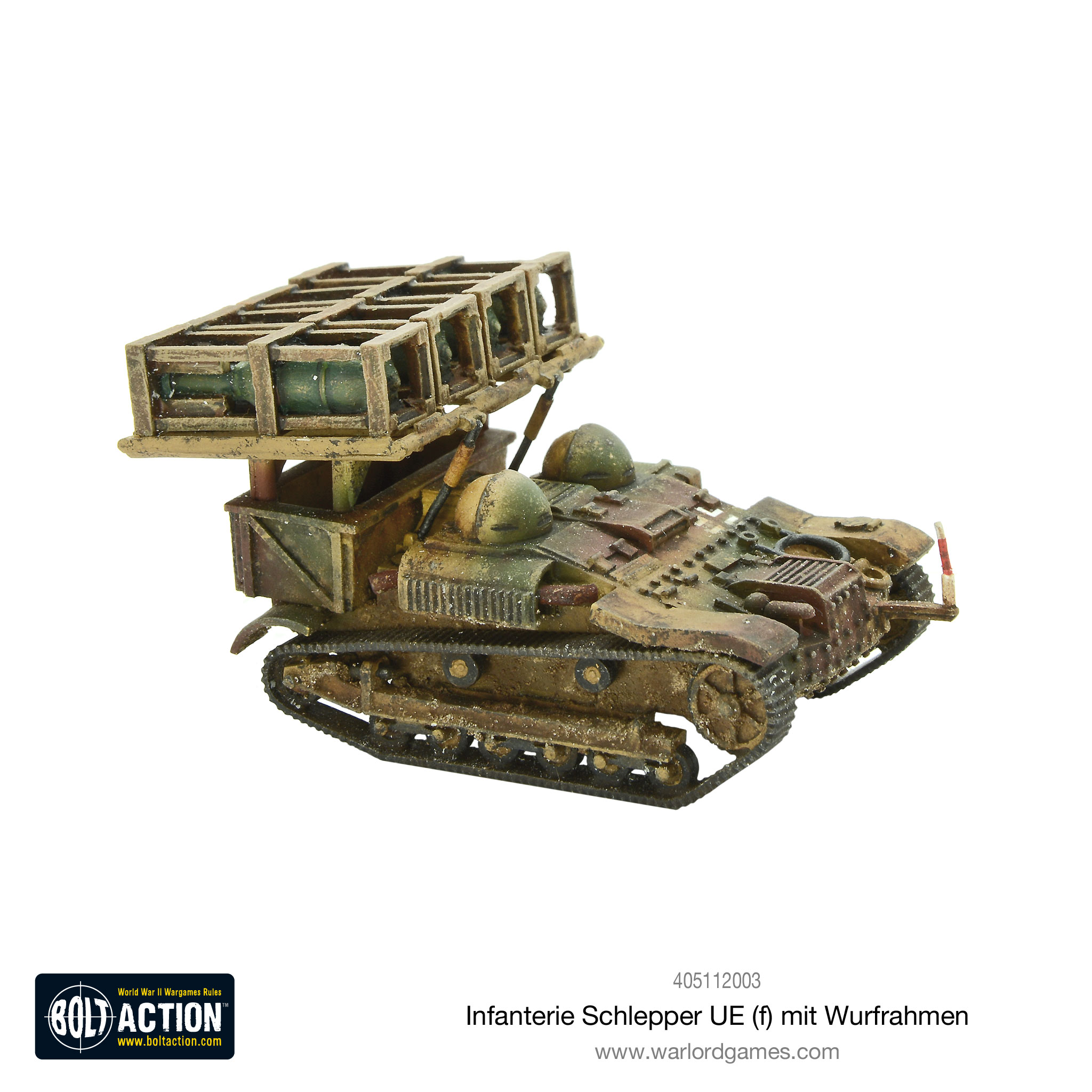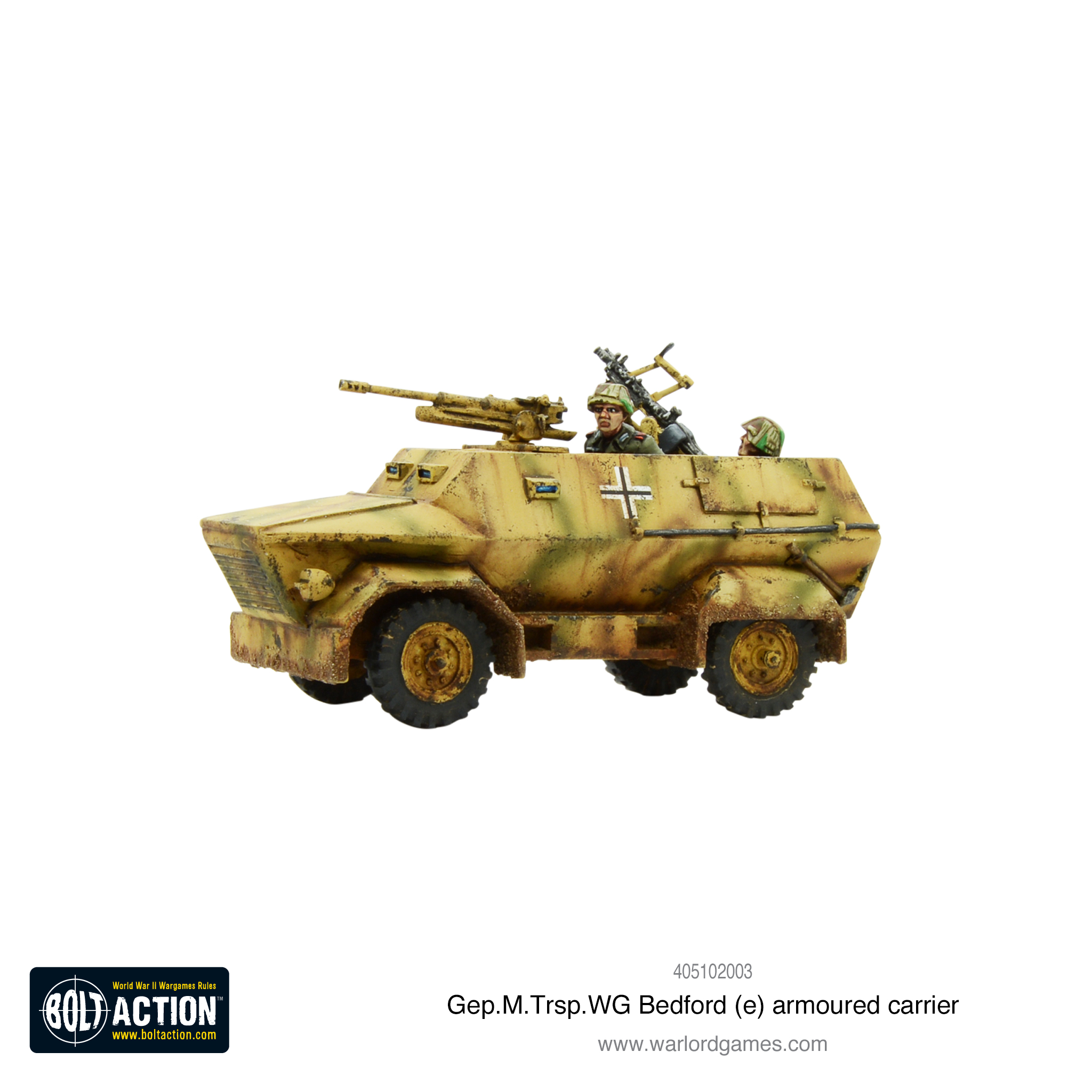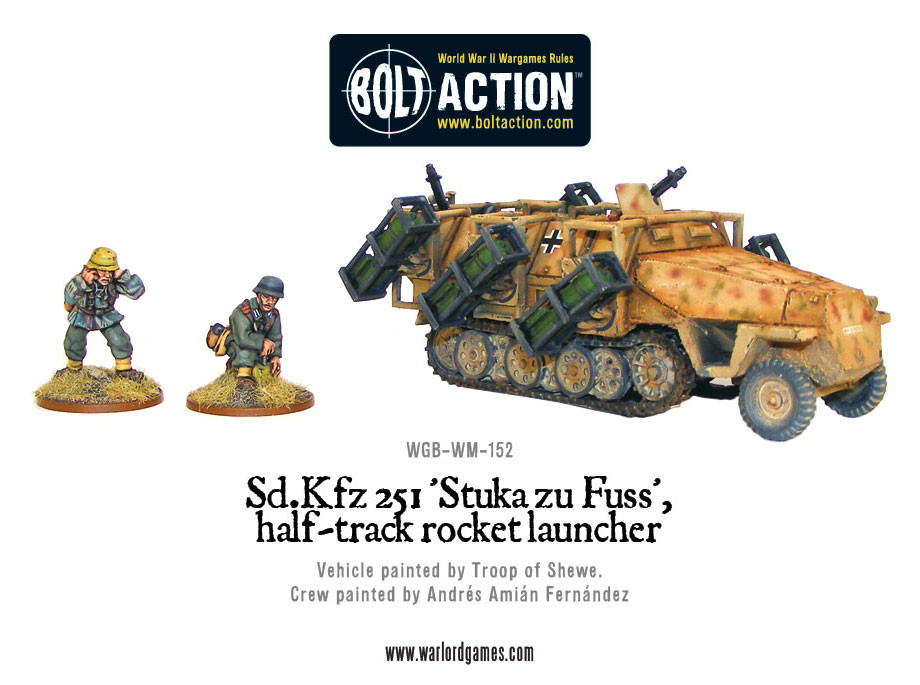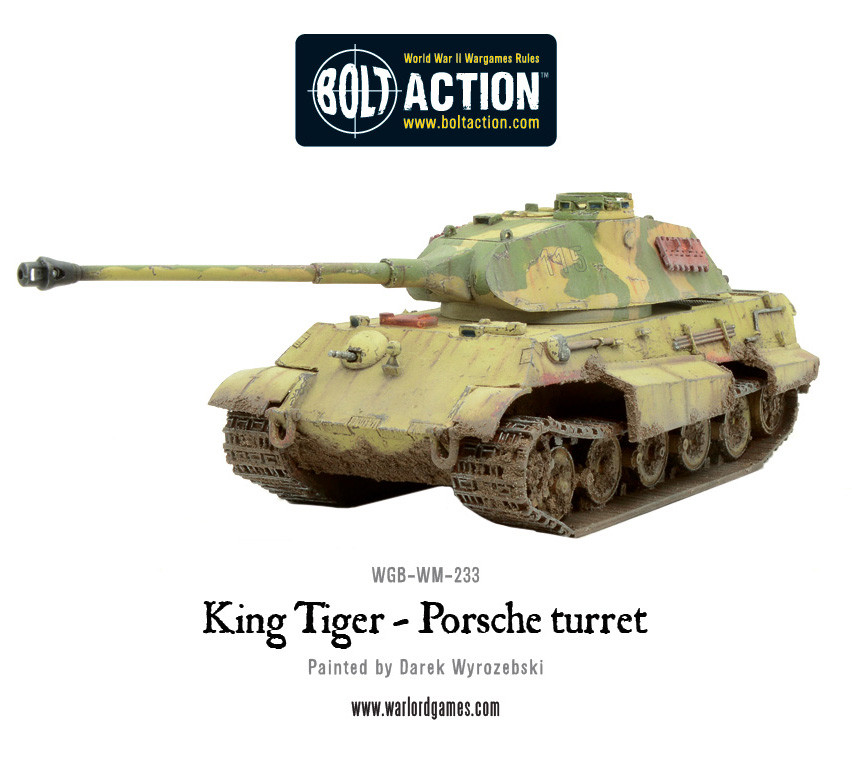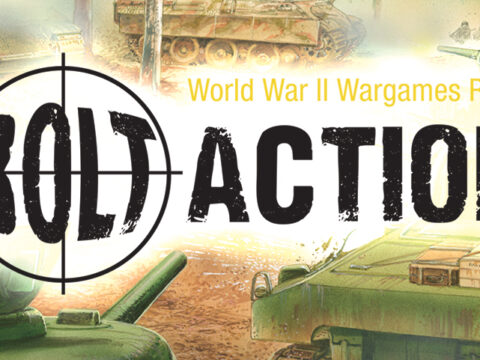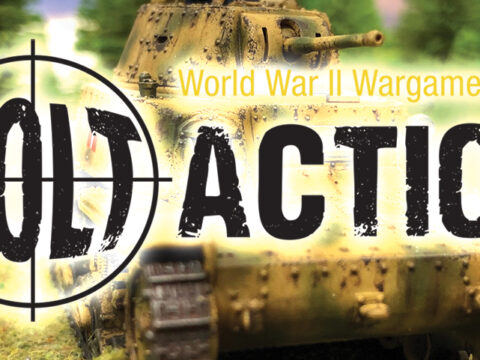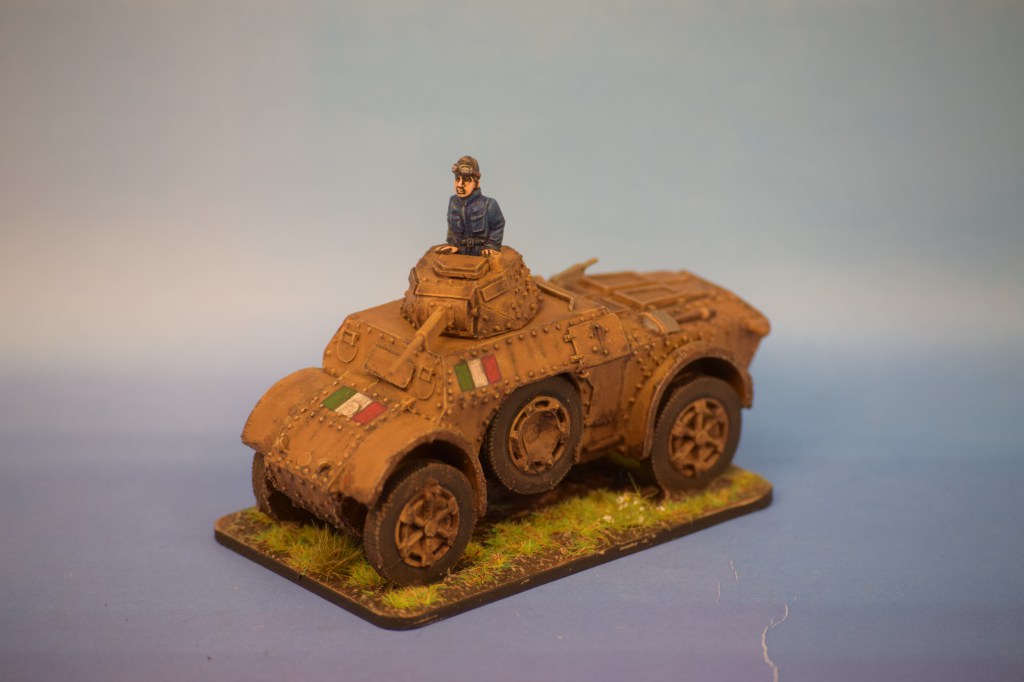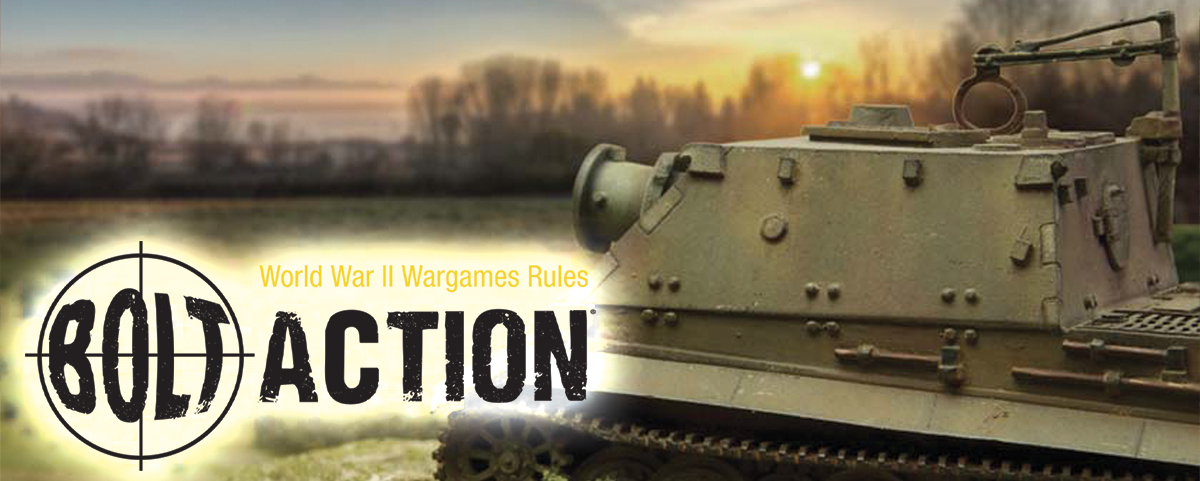
The Warlord Webstore is replete with ranks upon ranks of armoured monstrosities that are ready to unleash onto a Bolt Action battlefield; tanks, trucks, SPGs, transports, half-tracks and many more. Many of the more unusual, or uncommon vehicles of the war are cast in resin, a material famed for lightness and sharpness of detail. A fair few of these vehicles you’ll only be able to find on the Warlord Webstore, so we’re taking a look at a few of the examples of specifically German armoured vehicles available to order right now – adding one or more of these to an army can really make it stand out on the tabletop, or provide a fine and satisfying hobby challenge in their own right.
Panzer VIII Maus Super-heavy Tank
Okay, so we’re cheating a little bit with this first one, with only as many as two prototypes completed in the latter days of World War Two, but we felt it too cool a kit not to include here.
One of the most enigmatic armoured fighting vehicles of the Second World War… The subject has the fairly innocuous designation VK100.01 Porsche Type 205 yet to any serious student of WW2 AFVs this subject is better known as the Panzerkampfwagen VIII Maus (Mouse).
This example of late war German imagination may be named after a tiny rodent but it is anything but mouse like. Weighing an astonishing 188 metric tons the Maus still holds the record as the heaviest fully enclosed armoured fighting vehicle ever built. Unlike the majority of the so-called ‘paper panzers’, advanced German tank designs which only existed in technical schematics and project documentation, the Maus was actually built with two prototypes almost complete and perhaps as many as 9 others under construction when Hitler cancelled the programme in late 1943.
Whilst the Maus may not have entered combat during WW2 there is no reason why you cannot field this mighty vehicle in your games of Bolt Action. Of course any operational Maus prototype would have fought during the dying days of the Third Reich. The Panzer VIII Maus may therefore be taken as a Tank choice in the 1945 – Last Levy force selector found in the Armies of Germany book on pg.95.
Sd.Kfz 234/2 Luchsturm Armoured car
As World War 2 entered its final stages the ever resourceful German units on the ground, starved of supplies, turned to using whatever was at hand – the results turning into unusual and unclassified one off examples.
In Bolt Action
Fast mobile weaponry such as this can make a real difference when it comes to securing an avenue of approach early in a battle. Particularly good on the flanks, move up to a good position early to hinder the enemy, or at least distract them from your real objectives.
| Cost: | 80pts (inexperienced), 100pts (Regular), 120pts (Veteran). |
| Weapons: | 1 turret-mounted light autocannon and co-axial MMG. |
| Damage value: | 7+ (armoured car). |
| Special Rules: | Recce (dual direction steering) |
German Pak 40 auf RSO
In 1943, some 60 Raupenschlepper Ost (RSOs), were modified by mounting a Pak 40 anti-tank gun and some light armour plates for the protection of the crew from small arms fire.
The resulting tank destroyer, regardless of the fact that it was quite slow due to the weight of these additions, was rushed into use to face the growing threat of the Soviet armoured divisions.
The Pak 40 auf RSO comes with 3 superbly detailed, in action, crewmen.
| Cost: | 116pts (inexperienced), 145pts (Regular), 174pts (Veteran). |
| Weapons: | 1 forward-facing heavy anti-tank gun. |
| Damage value: | 7+ (armoured carrier). |
| Special Rules: | – Open-topped – Slow |
Infanterie Schlepper UE (f) mit Wurfrahmen
The 21st Panzer division would be the only tank division to oppose the Allied landings in Normandy. Having been rebuilt after the defeat in Afrika the 21st was refitted with a variety of vehicles including specialist repurposed equipment, known as Becker’s Conversions (Battleground Europe page 40).
During the early part of 1944, Major Alfred Becker and his artillery command were responsible for taking obsolete captured British and French vehicles and refurbishing and redesigning them into useful machines. One such was the French UE carrier which Becker re-designed into rocket launchers mounting 28/32cm heavy rockets for infantry support. Its principal service was during 1943-45 with roughly 40 vehicles being made into this variant.
The multiple rocket launcher can be a very devastating weapon, it has the ability to cause a lot of damage to many different units simultaneously. With 7+ armour the Infanterie schlepper is impervious to all forms of small arms fire but keep it out of harm’s way in preparation for a devastating coup de grâce.
Gep.M.Trsp.WG.Bedford (e) armoured-carrier
After the early Campaigns of World War II, the British Expeditionary force left behind much equipment during their retreat from the front, including many Bedford trucks. Later in the war during the defence of Italy around 1944, German vehicles began to appear, based upon a strangely familiar chassis.
Many British Bedford trucks were captured during the successful German offensives in early war (like in the Western Desert or Crete). Later, from around 1944, several were converted with armour plating and mounted different type of weapons, giving birth to the Gep.M.Trsp.Wg Bedford (e) armoured vehicles, which saw use in the defense of Italy and Germany in the latest phases of the war.
Principal Service: 1944–1945. Numbers manufactured: unknown
| Cost: | 96pts (inexperienced), 120pts (Regular), 144pts (Veteran). |
| Weapons: | 1 forward-facing light anti-tank gun, 2 pintle-mounted MMGs covering the left, right and rear arcs. |
| Damage value: | 7+ (armoured car) |
| Special Rules: | Open-topped |
Sd.Kfz 251 ‘Stuka zu Fuss’, halftrack rocket launcher
The Wurfrahmen 40 (literally “launch frame 40″) was a German World War II multiple rocket launcher. It combined a vehicle such as the SdKfz 251 halftrack with rocket artillery to form a more mobile and slightly more protected artillery piece than the towed Nebelwerfer. It was nicknamed Stuka zu Fuss (“Stuka on Foot” or “Walking Stuka”) and Heulende Kuh (“Bellowing Cow”).
Introduced in late 1940, the weapon system consisted of a framework with adjustable base plates fitted over and alongside a vehicle which could hold 300 mm high explosive (HE) rockets; 280 mm HE and 320 mm incendiary rockets were also used, the rockets themselves being fired while still in their loading crates.
King Tiger (Porsche Turret)
The Königstiger (officially named the Panzerkampfwagen Tiger Ausf. B), known as the ‘King Tiger’ or ‘Royal Tiger’ by the Allies, was a development of the famous Tiger I tank. It’s introduction to hostilities in 1944 caused significant problems for the Allies in countering this potent threat but ultimately it saw action too late to have a game-changing impact on the war. However, it was feared and respected by the Allies whose tanks could be easily destroyed by the high velocity 88mm gun mounted on its turret.
Two turret designs were used in production. Both were designed and made by Krupp and, after Henchel were awarded the contract, the prototype Porsche parts were given to other projects. As the first Henchel chassis rolled off the production line the only available turret was the one destined originally for the rejected Porsche project. This turret was adapted to fit the Henchel Tiger II body and had a rounded front and steeply sloped sides, with a curved bulge on the turret’s left side to accommodate the commander’s cupola. Fifty Porsche turrets were mounted to Henschel’s hull and used in action until the Henchel turret variant production came online to replace it.
Though their sometimes obscure origins and bizarre designs often didn’t allow some of these vehicles greater prominence in history, this makes them all the more intriguing. And this is just a small selection of what’s available on the Warlord Webstore, there are many more to be found, each with their own fascinating histories to discover. You’ll also find plenty of new tactics to incorporate into your tabletop games as well, with many of these vehicles providing new challenges both to field, and face off against, in the Bolt Action setting.

